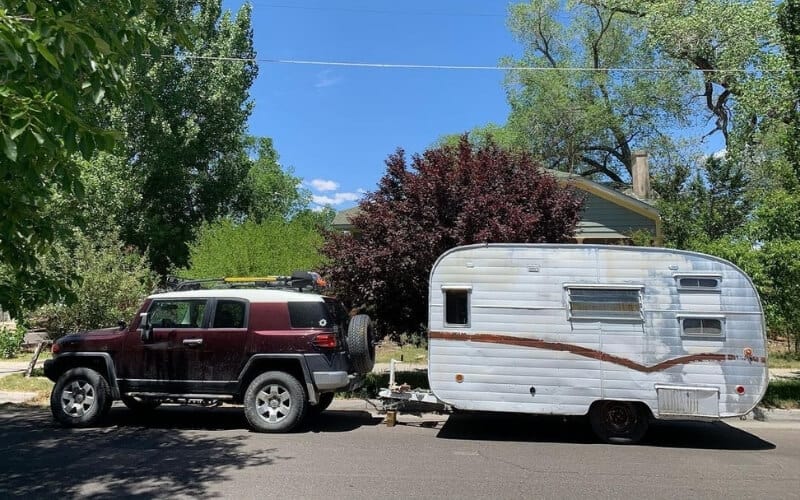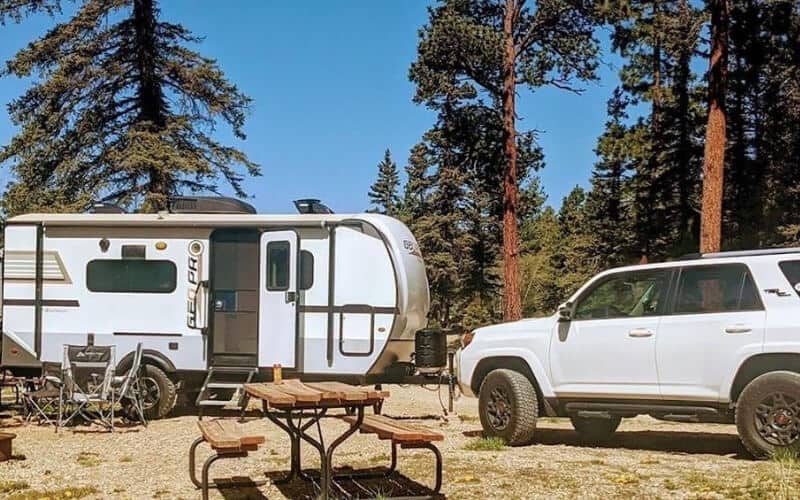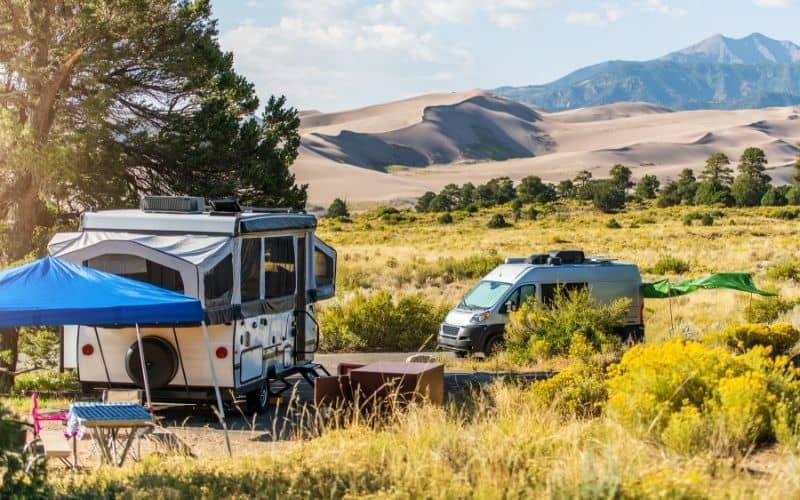If you’re shopping for a new RV and you aren’t blown away by any of the models you’re finding on lots at your local dealerships, you can benefit from knowing when new RV models are announced and released.
Most RV manufacturers release their newest models by March at the absolute latest. This restocks your local RV dealerships with the most up-to-date RV models by the time many people are looking to buy a new RV for their summer adventures.
However, many manufacturers will announce the release of their new models in November or December of the previous year.
This allows you to pre-order a new RV before it the manufacturing process has even begun.
In this guide, we’re going to tell you everything you need to know about new RV announcements and release dates.
We’ll also explain how the release and announcement of new RV models differ from the automotive industry.
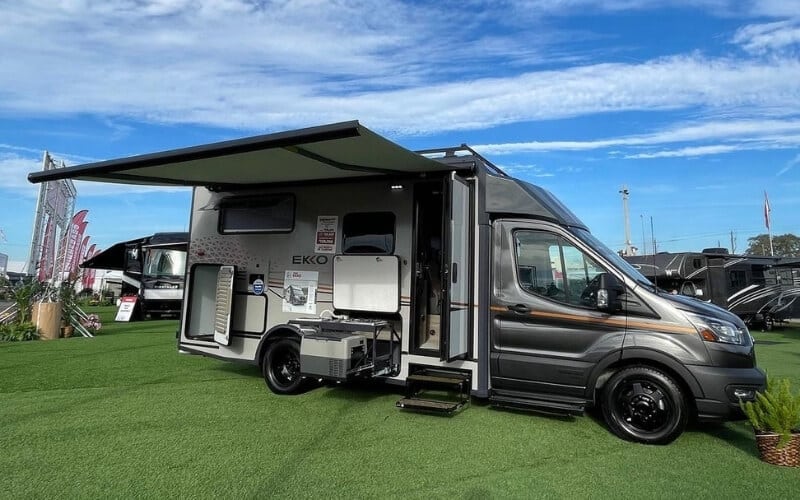
How To Find When New RV Models Come Out?
While most new model-year RVs typically come out in the final two months of the year and RV release dates typically come in the spring. In other words, you’ll see some 2021 RVs for sale as early as the spring of 2020.
New model-year cars typically come out in autumn of the previous calendar year but can start trickling out in mid-to-late summer. This means that you can expect 2021 vehicles to release throughout the second half of the 2020 calendar year.
That’s why one of the best ways to find out exactly when new RV models will be hitting the market is to attend one or two RV trade shows in your area.
These trade shows give you a pressure-free environment to survey the landscape of the best and newest RVs hitting the market.
And you’ll also be able to talk to representatives from the manufacturers of any RVs you’re interested in to ask specific questions about the changes and upgrades coming in the new year.
Another great thing about these trade shows is that you’ll be able to tour RVs, travel trailers, and 5th wheels of all sizes and at all price points.
They aren’t just an option for the newest and fanciest RVs on the market. In fact, there’s something there for almost any budget imaginable.
Most of these trade shows tend to take place in the fall because this is when many RV manufacturers actually add new features for next year’s models.
By attending an RV trade show in the fall, you’ll be able to have a better idea of what next year’s RVs will actually look like when they finally arrive on the dealership’s lot in the spring of the following year.
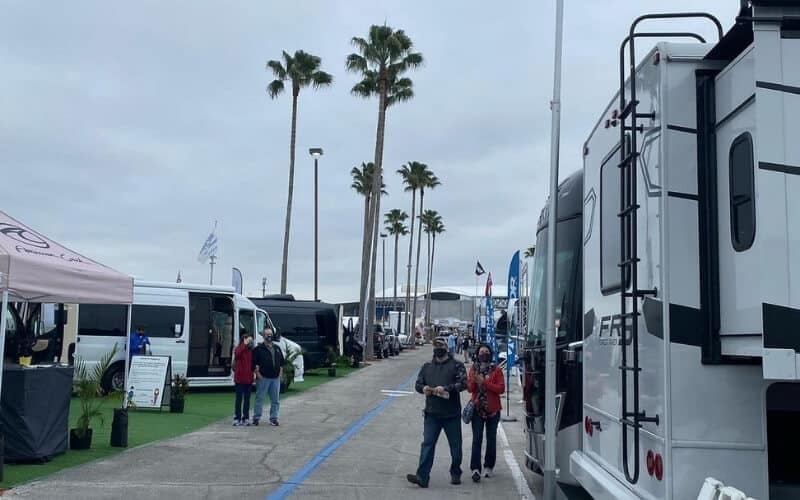
The RV Industry Versus The Automotive Industry
If you turn on your television, the odds are very high that you won’t be able to go through more than two or three commercial breaks without seeing an advertisement for the newest vehicle models on the market.
Advertising
The automotive industry pours a ton of money into their advertising efforts to make sure that their new vehicles are seen by plenty of needy eyes.
They also regularly release their newest models at the end of every year so that you don’t have to wait until the spring to buy the latest and greatest vehicle of your choice.
The RV industry, however, works a little bit differently. While RV manufacturers still dedicate plenty of their budget to advertising efforts, they tend to spend their money a little differently.
Think about it: When is the last time you saw a 30-second commercial spot for an RV, travel trailer, 5th wheel, or popup camper?
Because manufacturers of recreational vehicles are, on average, advertising to a different demographic than automotive manufacturers, the latest information on upgrades to their RV models can be harder to find online. That’s why those trade shows we mentioned earlier can be so valuable.
Supply and Demand
Part of the reason for the somewhat lackadaisical approach that many RV manufacturers take to announcing the release of their newest models is due to the fact that there’s less demand for RVs than traditional vehicles.
The good news is that this doesn’t mean there aren’t plenty of new RVs released every year.
It just means that you’ll need to be more intentional and focused when it comes to finding out exactly what changes RV manufacturers are making to their models year after year.
When Are New RV Models Announced?
In addition to visiting local trade shows, forming a relationship with a salesperson at your local RV dealership is a great way to find out when new RV models are announced.
These salespeople are often the first ones to notice that the VIN numbers on an incoming shipment of RVs have changed to reflect a new year.
To be honest, though, this approach isn’t foolproof because you’ll probably be surprised by how often RV dealerships don’t even know when to expect new RV on their lot.
For whatever reason, all manufacturers aren’t exactly forthcoming when it comes to announcing their newest models.
That being said, that’s not usually true for the most popular RV brands on the market these days.
Brands like Jayco, Fleetwood, Thor Motor Coach, and Aspen Trail tend to be better about posting release dates, feature upgrades, and pricing information online for their newest RV models.

When Are New RVs Released?
If you visit the lots at your local RV dealerships anywhere from late February to early April, you’ll most likely find a bunch of fresh arrivals.
As we mentioned earlier, most RV manufacturers release their newest models in the spring so that they’re available for buyers that are planning their upcoming summer RV vacations.
One reason behind this strategy is that RV manufacturers want to wait as long as possible to sell as many of the previous year’s models as they can before releasing new RVs.
By waiting until a few months into the year, they give ambitious buyers an extra few months to get into last year’s model before they release a bunch of new models.
This also helps to create a little more buzz and anticipation for the newest RVs.
Folks that weren’t able to attend trade shows in the fall will be able to talk to their local dealership throughout the spring as they research which new RV model they want to tour once it arrives on the lot.
What About RV Forums?
Aside from trade shows and bugging a salesperson at your local RV dealership, online RV forums can also offer a good place to find up-to-date information about RV announcements and release dates.
This is because some of the folks that read and post on these forums actually work for RV manufacturers.
Whether the manufacturers like it or not, some information about new RV models can get leaked into online forums before the company makes a formal announcement or adds release dates to their website.
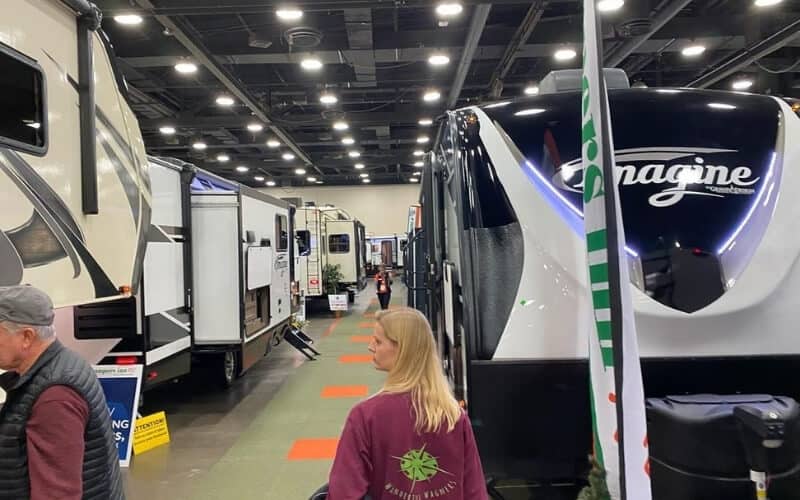
When Is The Best Time To Buy A New RV?
The obvious answer to this question would be March or April, which would correspond with typical release dates for new model RVs, travel trailers, and 5th wheels.
But buying right when new RVs hit the dealership’s lots typically won’t get you the most for your money.
In fact, there can be a lot of merit to waiting until the following fall or winter to buy a new RV. This is because new model RVs typically don’t sell like hotcakes right when they hit the market.
That means that there will usually be plenty of new RV models remaining in stock if you wait to buy until the fall or winter.
Waiting until about six months after new RVs are released also gives time for prices to drop.
Not only can you get a discounted deal on a new RV in the fall or winter, but there will also be more pressure on salespeople to get those RVs off their lots in anticipation of new arrivals the following spring.
To be clear, the best time to buy a new RV is between October and late February. The closer you get to the date of new RV arrivals on dealership lots, the more pressure dealerships will have to offer discounts on the previous year’s models.
This is why it takes many people at least a year to research and purchase a new RV.
From visiting trade shows in the fall to touring new RV models on the dealership lot in the spring to waiting to get a better deal by buying in the fall or winter, buying a new RV is a process that shouldn’t be rushed.
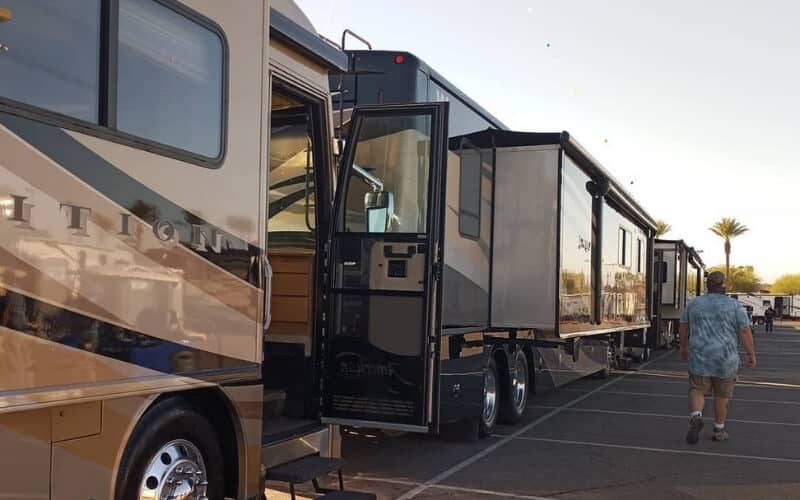
Should You Really Buy A New RV?
The best (and shortest) answer to this question is: sometimes. Just like vehicles, RVs begin to depreciate from the moment you drive off the lot at the dealership.
That means an RV is rarely going to be worth more than when it’s fresh on the lot.
That being said, it’s rare to talk to an RVer that didn’t deal with some sort of repair or fix within the first year or two of owning their rig.
And it’s also rare that RVers do a superb job keeping up with regular maintenance and cleaning of their rigs.
This means that many used RVs can come with more problems than they’re worth.
Even though you’ll be able to get a used RV at a much lower cost than a new RV, the added cost of repairs and upgrades can cause you to spend more money in the long run.
On top of that, most new RVs are covered by the manufacturer’s warranty for at least the first 12 months.
The benefit of this is that you won’t need to worry about paying for repairs or maintenance on your new RV for at least a year after the purchase date.
And if you research extended RV warranties, you may avoid paying for repairs, replacements, or upgrades for longer than that.
This is simply a benefit that you won’t enjoy with a used RV. No matter how diligent you are in your used RV buying process, there’s still a chance that something breaks or malfunctions within a week or two of finalizing the purchase.
In our opinion, it’s worth buying a new RV if you don’t have a lot of experience living or traveling in an RV. That’s because you’ll get a rig in premium shape and you’ll be covered by the manufacturer’s warranty as you learn the ins-and-outs of owning an RV.
If you have plenty of experience living, traveling, and even working on RVs, you’ll probably have better luck buying a used RV.
But if you do go this route, we recommend bringing any RV that you’re interested in buying over to a trusted mechanic to perform a full vehicle check.
You can also look into a mobile RV repair service in your area that’s willing to meet you and help you look over the used RV that you’re interested in.
This will give you an experienced set of eyes to give you more information on the current condition of the RV as well as what you might expect to fix or replace within the next six to 12 months.
Conclusion
The RV buying process can actually be subject to more negotiation than your typical automotive purchasing process.
That’s why it really helps to study up on best practices for buying an RV before you start down that path.
That includes using resources like NADA Guides to find pricing information and finding dates for upcoming RV trade shows in your area.
If you have anyone in your community or neighborhood that owns an RV, you should know that experienced RVers can be an invaluable resource to new RV buyers.
They can tell you stories about mistakes they made when buying their first RV and provide you with a checklist of things to look for when you’re comparing different RV models.
In fact, you can actually find plenty of RV buying checklists online to help guide your RV buying process.
But by tuning into online RV forums, visiting RV trade shows in your area, and connecting with a salesperson at your local RV dealership, you’ll strengthen your odds of finding out when new RV models are announced and released.
We hope you’ve found the tips and hints in this guide useful for your RV buying needs. And, as always, we wish you only the safest and healthiest of travels on all your upcoming RV adventures!

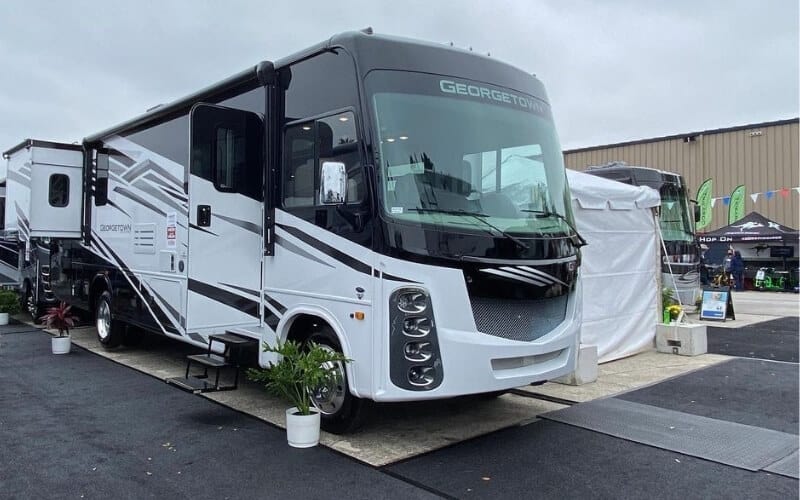

![10 Best 2 Bedroom RVs in [currentyear]: Top Rated Travel Trailer Floor Plans 8 Awesome Travel Trailers With 2 Bedrooms](https://www.rvingknowhow.com/wp-content/uploads/2019/12/Awesome-Travel-Trailers-With-2-Bedrooms-150x150.jpg)
